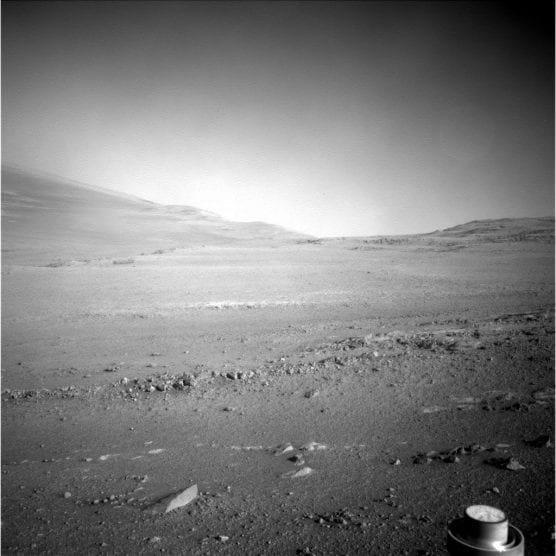NASA’s Opportunity Rover marked its 15th anniversary on Mars Thursday, though the space agency hasn’t heard from the intrepid explorer since a months-long dust storm covered its power-grabbing solar panels last year.
“Fifteen years on the surface of Mars is testament not only to a magnificent machine of exploration but the dedicated and talented team behind it that has allowed us to expand our discovery space of the Red Planet,” said John Callas, project manager for Opportunity at NASA’s Jet Propulsion Laboratory in Pasadena, California in a statement.
While Calas celebrated the impressive milestone, it was not without disappointment as Opportunity, also known as MER-B, has not been heard from since a massive dust storm rendered the rover incommunicado this past June.
“We are doing everything in our power to communicate with Opportunity, but as time goes on the probability of a successful contact with the rover continues to diminish,” Callas said.
On June 10, 2018, a dust storm engulfed the entire planet of Mars. The storm raged until early October, covering Opportunity with several layers of dust somewhere on the western rim of Perseverance Valley.
NASA officials theorize the dust covered the solar panels, blocking the sun and preventing the rover’s batteries from recharging. It wouldn’t be the first time during the rover’s 15-year stint on Mars that a dust storm rendered it temporarily incapacitated, though in previous instances shifting winds have blown Opportunity clean and it’s continued on its scientific mission.
Unfortunately, a wind event on Jan. 9 blew through the Perseverance Valley and Opportunity did not wake up, and hope for its resurrection diminishes daily.
Nevertheless, Opportunity’s mission has been a rousing success. Initially dropped on the Red Planet with its twin rover Spirit, the mission planned for the machines to be active for 90 sols (92 earth days). Instead, the Opportunity has been active for approximately 5,478 days since landing, taking photos, collecting soil samples and most importantly finding evidence of past water activity on the surface of Mars.
The rover has also made astronomical observations unique to its standpoint and given scientists insight into the atmospheric conditions of Mars.
The golf-cart-sized rover was designed to travel 1,100 yards during its stay, but has managed to travel about 28 miles, from Eagle Crater to Endurance Crater and then the Victoria Crater before reaching the massive Endeavor Crater in 2011. It’s been exploring the crater’s outer rim ever since.
Spirit, which landed the same day, also managed to collect soil samples and ample evidence of water activity on the planet’s surface before it powered down for good in March 2010.
If Opportunity fails to wake up, it leaves the 1-ton Curiosity rover as the only functioning NASA machine on the surface of Mars. Curiosity is currently exploring the interior of the Gale Crater. It is nuclear powered rather than solar powered, and was therefore unaffected by last year’s massive dust storm.
Curiosity will not be alone for long, as NASA has plans to land more robots on Mars in the next few years. The European Space Agency, Russia and China also have plans to explore the Red Planet with their own robots in the coming years, including some sent on a mission to search for signs of past alien life.
Like this:
Like Loading...
Related





 Tweet This
Tweet This Facebook
Facebook Digg This
Digg This Bookmark
Bookmark Stumble
Stumble RSS
RSS


























REAL NAMES ONLY: All posters must use their real individual or business name. This applies equally to Twitter account holders who use a nickname.
0 Comments
You can be the first one to leave a comment.